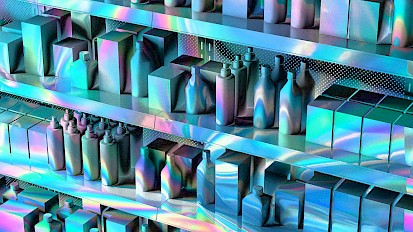Plastic is killing our planet. Will the consumer packaged goods industry step up?
 The companies that make packaged household goods, from dish soap to shampoo, have been complicit in creating a society addicted to single-use plastic. But it doesn’t have to stay that way.
The companies that make packaged household goods, from dish soap to shampoo, have been complicit in creating a society addicted to single-use plastic. But it doesn’t have to stay that way.
We didn’t always know that plastic is bad.
There was a time when we could see only the revolutionary nature of the material. We didn’t see it as the “forever garbage” we are depositing on literally every corner of the Earth. Back then we didn’t understand the dangers of microplastics (fragments less than 5 millimeters in length), now impacting our drinking water and our marine life. We could not imagine that there would be more plastic than fish in the ocean by 2050. We did not even grasp that the petroleum-laden supply chain would impact our climate. And we believed the lie that recycling could solve the plastic problem.
We know better now. But how did we get here?
Plastic comes from oil. Since chemical companies began to turn petrochemicals into plastic in the 1950s (and through the 1960s and ’70s, when the petrochemical industry figured out plastic would create environmental disaster) plastic has made its way into every part of modern life. In just 70 short years, plastic has become as commonplace in daily life as, well, food, water, and medicine.
One of the many miraculous things about plastic—durable, colorful, infinitely malleable—is that it’s cheap. In the U.S., a plastic water bottle costs just 2 cents to make. A brand-new, made-in-America bottle that will last thousands of years for less than the price of a single McDonald’s french fry. So what’s the problem?
While the cost of plastic production is low, the cost of disposal is enormous. Recycling is a seductive solution, but it is a siren song. Plastic recycling, if it worked, would solve one of society’s biggest problems: the need to do something with the nearly 20 trillion (yes, trillion!) pounds of plastic we have already created—plus the trillion or so pounds we add every year. If it worked, we could continue enjoying our single-use plastic yogurts, take-out containers, and, yes, dish soaps (that’s my business).
But plastic recycling doesn’t work. Only 9% of plastic waste is recycled, no matter how much we put in our bins. About 12% gets incinerated, more than 70% ends up in landfills, and up to 12 million tonnes go into our oceans each year. We don’t have the infrastructure to recycle our way out of the plastic crisis. And even with more recycling infrastructure, plastic can be recycled only two to three times before it degrades to landfill status.
Still, most consumers believe in the fairy tale of plastic recycling. That is no accident. Consumers understand that it is beyond wasteful to make single-use bottles, bags, and hangtags from a material that lasts, effectively, forever. So to keep the plastic-use party going, the plastics industry lobbied governments to get the recycling triangle on the bottom of nearly every plastic item (feasibly recyclable or not). And it worked. We dutifully flip our purchases over, see that reassuring triangle, and move on with our lives, guilt assuaged.
Despite all of this, the story of plastic doesn’t have to end badly! The consumer packaged goods (or CPG for short) industry, the industry I work in, has been complicit in creating a society addicted to single-use forever garbage. But we don’t have to stay that way. Plastic packaging is the leading contributor to plastic waste (about 42%) and CPG is a major player with the power to change the future.
The products that keep your laundry clean, your hair shiny, and your cupboard stocked do not have to come in plastic to do their jobs. The products we design and market are effective because of what’s in the bottle, not because of the plastic bottle itself. We, the CPG industry, can take action on plastic and still deliver the grease-lifting clean that you understandably demand from your dish soap. New brands, new business models, and an authentic commitment to creating a better future can change the path forward.
The corporations that sell us billions of plastic bottles each year are driven by a simple desire to make more profit. Right now, it’s profitable to sell plastic, so the incentive is for the status quo to continue until, tragically, the commons is completely filled with trash. CPG companies, including Grove Collaborative, the company I founded, need to move boldly to prevent the ever-worsening environmental disaster by moving away from plastic—and doing it fast.
We can change the material that we use to package your favorite laundry detergent, dish soap, and, yes, even your favorite bottled water. We can choose materials like aluminum, which, unlike plastic, is infinitely recyclable, and find zero-waste formats that don’t require plastic packaging. As a consumer, you can help by seeking out brands with these values and with zero-waste and zero-plastic formats. And you can demand accountability on plastic from all companies.
It might not seem like it, but I am an optimist. I believe that consumers understand the dangers of single-use plastic and are demanding action. The CPG industry can move away from plastic waste through innovation and bold action. We can lead. Will we? I sure hope so.
You can return to the main Market News page, or press the Back button on your browser.

